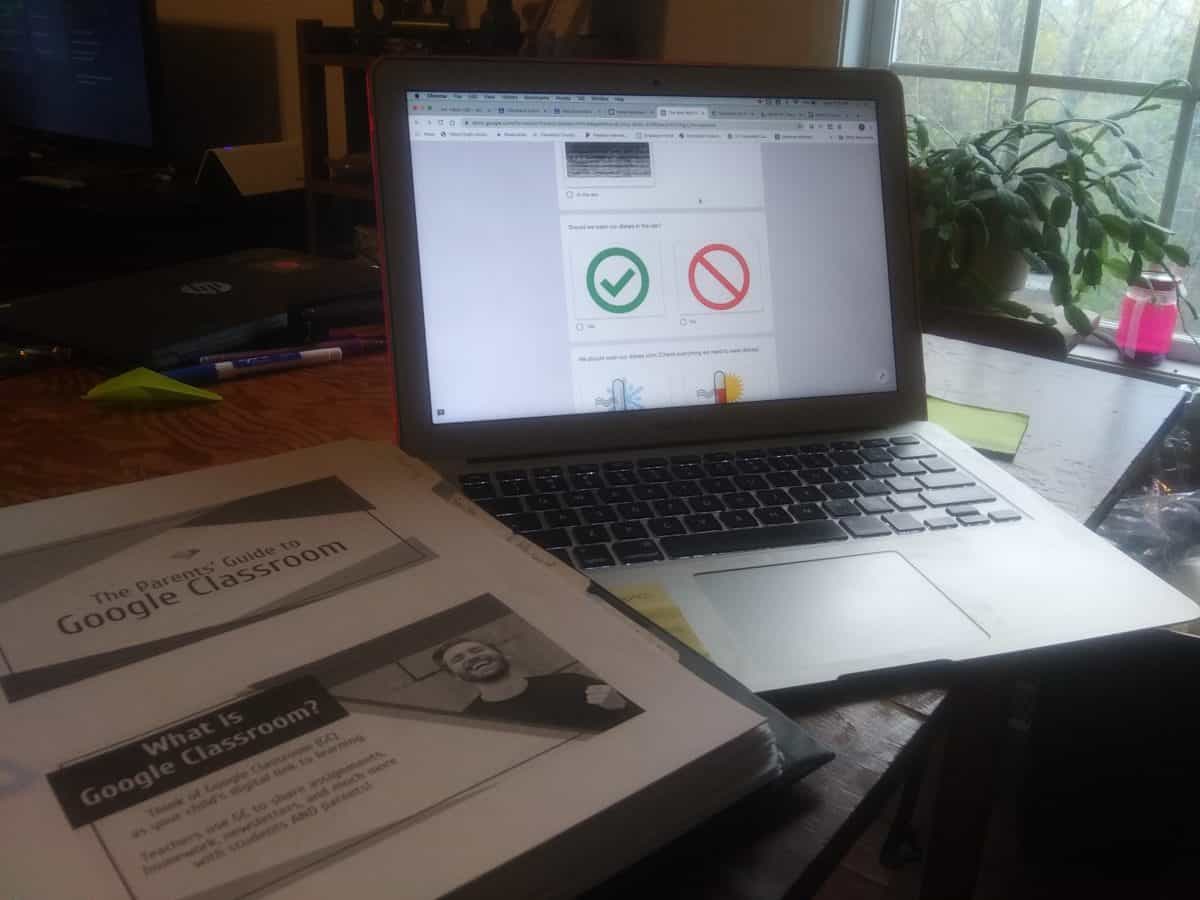
When the COVID-19 school closure announcement reached Cleveland County Schools, it felt abrupt. Everyone was at school Friday, March 13. The very next morning, with kids home with their families for the weekend, Gov. Roy Cooper held a press conference announcing a two-week closure of K-12 school buildings statewide.
There was so much confusion, so many questions. Parents didn’t know if children would return to school after two weeks. What would happen if schools closed for an extended amount of time? For families with kids in the district’s Exceptional Children’s (EC) Department, the scenario was daunting. Would it even be possible to teach kids virtually?
In the hours after the closure was announced, though, Cleveland County’s EC Director Nellie Aspel started making plans. The result would be a 38-page guidance document that helped EC teachers transition into remote learning and has resulted in some unexpected benefits for teachers and families.
“She had the foresight to realize we’re probably not really going back to school, so we’re going to have to come up with a plan for what we’ll do when we can’t be at the school but we still need to provide our EC services,” said Rachel Bye, an EC teacher at Shelby High School.
Aspel proved right. Days after the initial closure announcement, Gov. Cooper announced that school buildings would close until May 15.
By that time, Aspel had assembled a team of her district’s EC personnel and started delegating. She made a list of those especially experienced with different areas of EC instruction – like handling extensions of content standards, occupational course of study, virtual instruction, and documenting the provision of (or failure to provide) EC services.
She asked each group to put together materials and resources on their area, and she set a deadline for the end of the first week school was out. That way, they could share the work with everyone for feedback and to fill in gaps.
Meanwhile, Aspel got in touch with general education teachers, trying to understand what a remote learning framework would look like for them. She checked on legal compliance, looked at contractual obligations, and made lists upon lists of what needed to be completed if the district moved to remote education long-term.
“Dr. Aspel had the vision, and she knew we had to get started on this or we wouldn’t be ready,” said Bye, whose own realization of what COVID-19 and school closures would mean happened a few days after Aspel’s plans got underway. “I thought we were going to have a little time off, but once she was communicating with us, I realized, wait, there’s a lot we’re going to have to do.”
While Aspel’s team worked on a guidance document for EC teachers, Superintendent Stephen Fisher worked on plans to assist all students. One of his first priorities was how to reach students that have no access to internet, such as in the foothills of the mountains where broadband lines aren’t even laid down.
The district initially designated eight schools to house internet hot spots where parents could drive their kids, park in the parking lot, and go online. As requests streamed into the central office, the number of hot spot schools grew to 18.
For parents who can’t take advantage of the hot spots, teachers are making packets that document the instruction being provided online and include instruction material and assignments. Parents are picking them up at school or, when busy schedules don’t allow for that, educators are dropping them off at kids’ doorsteps.
“A couple key essentials that have to happen to be able to do something like this and make it successful is, first, there has to be a lot of collaboration and teamwork between all partners in the school system,” Fisher said. “And that’s general ed, EC, everybody. Everybody has to be working from the same playbook and singing off the same song sheet. There has to be really good communication, collaboration, collective work that’s happening from the district level. And I think that has to be embedded in the culture of the district because in times like this, it just doesn’t always start. It has to be second nature.”
Fisher and Aspel worked together, with goals for serving EC kids resting both on getting new guidance to EC teachers and also on making sure EC teachers and general ed teachers were on the same page.
“In our system, children are general education students first and they’re a child with a disability second. So my first thought was, I’ve got to get to my general education colleagues. I wanted to see what framework would they put in place and then how would I need to adjust that framework to be able to deliver services to close to 2,400 students with exceptional needs,” Aspel said.
Once Aspel compiled and revised the EC guidance document, she reserved the second week off from school for training teachers on virtual instruction, figuring out how to get resources and materials into teachers’ hands, and walking each teacher through the documentation process.
“And those of us who were working on our own little piece, it’s only looking back at it that I can understand, wow, she could really see all those pieces and knew what needed to happen and got us to be working on each part so that we can have a big full plan,” Bye said.
As the training ensued, some teachers had doubts. But with several days to work with teachers, district leaders were able to quell reservations.
“And of course, when it was coming out we heard teachers say, ‘Oh, we can’t do this,’” said Shi Whisnant, an EC teacher at North Shelby School. “But we can. We just have never had the opportunity to do it before. We wanted to find ways to get around the barriers and turn them into opportunities to try something new.”
Remote instruction officially began on March 30 – the day schools might have returned under the governor’s initial closure order. The final EC remote instruction plan is a 38-page document called Guidelines for the Delivery of Specially Designed Instruction During School Closure.
“They worked tirelessly to get these documents in place, and then call people in for feedback and testing it out before we got it out to everybody to limit the number of questions,” Whisnant said. “I don’t know if you’ve ever been in a room full of teachers during training, but it can be challenging. Our leadership team did an amazing job, and it has really helped us transition from just being so active in the classroom and in the community to being stationed at home. It’s helped us to segue back into interacting with our students and their families.”
The plan provides guidance for all EC teachers and then breaks down instruction, resources, and materials by grade level. In addition, the EC department has a conference every week, and EC co-teachers are in constant communication with their general education teachers.
While the document is packed with practical guidance, it also sets a first-things-first tone, announcing several times that the priorities are the kids, their physical safety, and their mental health.

In their third week of remote instruction, EC teachers say they’re starting to find a groove. They are still working out kinks, like connecting with students whose parents are at work or effectively duplicating and delivering paper materials to students without internet access. But district-wide, the focus is on turning hurdles into opportunities.
“There were some challenging obstacles, and still are,” Fisher said. “We try to look at those challenges as really opportunities and not sit back and say, ‘Well, we can’t do this, we can’t do that.’ Instead, it’s how are we going to do this? And don’t look at those hurdles as immovable objects. Our philosophy is to take this as an opportunity to do something that we’ve never done before.”
Recommended reading

